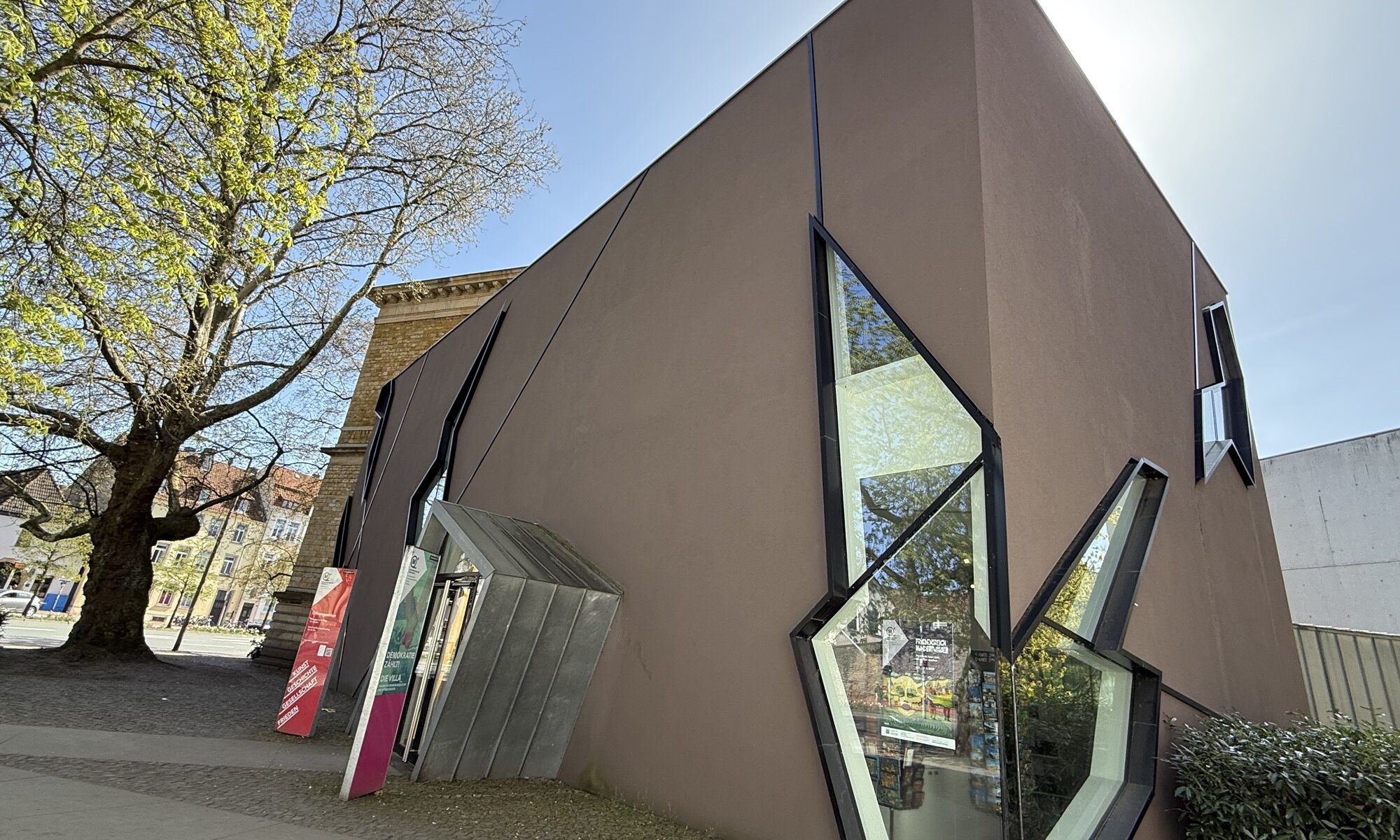The Felix-Nussbaum-Haus in Osnabrück is a museum dedicated to the works of Felix Nussbaum, a Jewish painter who was murdered at Auschwitz during the Holocaust. Designed by renowned architect Daniel Libeskind, the building reflects Nussbaum’s life and art through its unconventional and striking design. Completed as Libeskinds first realized building in 1998, the museum features intersecting structures that evoke a sense of disorientation and confinement, mirroring the artist’s experiences during his persecution. Visitors can explore narrow corridors, abrupt intersections, and void spaces that challenge perception and create a unique emotional journey. The museum connects to the adjacent Kulturgeschichtliches Museum at various points, enhancing its integration within Osnabrück’s cultural landscape.
The Felix-Nussbaum-Haus is part of the Museumsquartier Osnabrück. Each institution contributes to a diverse exploration of history and art. For example, Villa_ serves as a space for critical discussions on democracy, while the Kulturgeschichtliches Museum showcases Osnabrück’s history alongside graphic works by Albrecht Dürer. This interconnected museum complex invites visitors to engage with themes of peace, history, and creativity. The Felix-Nussbaum-Haus stands out for its architectural symbolism and focus on Nussbaum’s legacy.
Felix Nussbaum was born in Osnabrück in 1904 and pursued art in Berlin and Roma before his life was upended by Nazi persecution. His paintings often depict themes of alienation, fear, and resilience during his years in hiding. His works are associated with Neue Sachlichkeit (New Objectivity), an art movement emphasizing realism and social critique. Nussbaum’s style combines meticulous detail with poignant symbolism, capturing the struggles of his time while reflecting his personal anguish. His legacy remains a powerful testament to the human spirit amidst adversity.
The collection at the Felix-Nussbaum-Haus came to Osnabrück through efforts to preserve Nussbaum’s works posthumously. Many pieces were rediscovered after his death, including those created during his final years in hiding. These artworks were brought together to honor his memory and provide insight into his life as an artist under oppression. Today, the museum houses over 200 of his works, offering visitors a profound connection to both his artistic vision and historical context.
Felix-Nussbaum-Haus
Museumsquartier
Osnabrück
Germany
Loading map...


